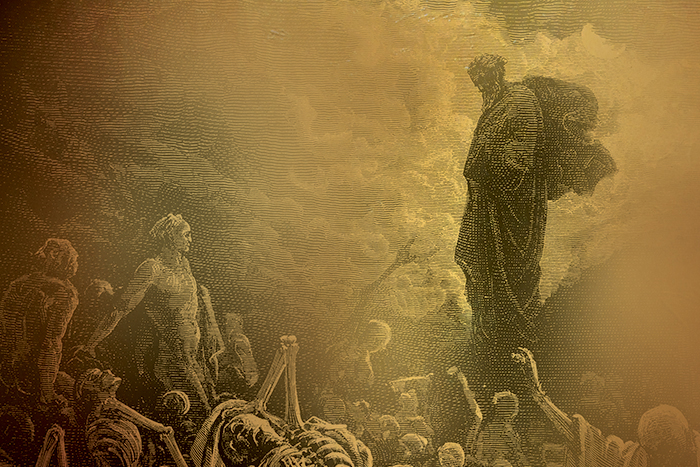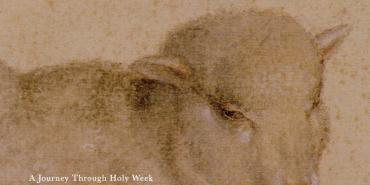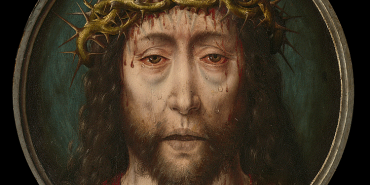Resurrection in the Old Testament and Early Jewish Thought

As important as the concept of resurrection is to the New Testament and Christianity, it is surprising to find that the Old Testament has very few references to this belief. According to scholars like Robert Martin-Achard, this owes in part to the ancient Israelite understanding of what the good life should be. For ancient Israelites, the best life was one that was focused squarely on this world, because every living person is formed from the dust of the earth and made alive by the breath of God (i.e., His Spirit).
Since God’s greatest gift to all humanity is this life itself, the hope for this life was to have enough to live in modest comfort, to have children, and to die in peace after a long life.
Key Old Testament heroes like Abraham (Gen. 15:15), Isaac (Gen. 35:29), Jacob (Gen. 49:29-33), Moses, and even David (1 Kings 2:10; 1 Chron. 29:28) model this hope for what was considered the good life. Each lived many years, had children, and was buried in peace, typically with their ancestors. From an Israelite perspective, what more could anyone want?
There seems to be little reflection on what happens in death, except to affirm that death broke the divine bond between human bodily existence (dust of the earth) and the breath of God that made the dust of the earth live. Without body and breath, people went to Sheol, a dark, murky, and lifeless place. The only way to live beyond death was to be remembered by the living and to be buried with one’s ancestors.
While this may be the ideal life, God’s people experienced all kinds of threats to living it out.
Disease, famine, war, pestilence, and premature death threatened the livelihood of God’s people. Miracle stories like those centered on the prophets Elijah and Elisha would have provided hope for the persistence of this ideal.
God intervened many times through the prophets with His provision in the form of food (1 Kings 17:8-16), rain (1 Kings 18:41-46), healings (2 Kings 5:1-19) and, of course, miracles, where the dead came back to life (1 Kings 17:17-24; 2 Kings 4:8-37). In addition, the people lamented to God during times of distress, with the hope that God would hear their cries and preserve them from suffering, or remove the pressing threat against their ability to pursue the God-given hope for the ideal life (Ps. 6; 13; 38).
As powerful as this hope was for individuals, it also was applied to the nation of Israel as a whole. Thus, when the prophets referred to death and the hope for a renewed life, they were not talking about an afterlife. Instead, Hosea hoped for a revived nation of Israel (Hos. 6:1-3), which would finally follow God’s ways.
Even Ezekiel’s hope for a revived army of skeletons that became living people again (Ezek. 37:1-4) was not about a future afterlife for the exiled individuals of Judah. Instead, it expressed the hope for Judah, as the renewed people of God, to once again pursue together the goodness of this life in the here and now.
According to prophetic teaching, both the nations of Israel and Judah had forfeited the opportunity to live the ideal life because of their rebellion against the Lord and so were sentenced to death or exile. Even in exile, the prophets encouraged the people to be faithful and to hope that God might smile on them again, so that they could be restored to what God had intended for His people in this life.
Later in exile, as other nations came to power, it appears that their exposure to other cultures (i.e., Babylonians, Persians, and Greeks) brought new ways of thinking for the early Jews. While it made sense to hope early in Judah’s exile, this changed when Jews experienced sustained persecution for being faithful to their God. More depressing was the realization that they could not hope that the situation might ever change because of the overwhelming military power of those who ruled over them.
In this bleak situation, God’s people began to wonder how a just God could tolerate the unjust death of His people.
In their reflection, it is surprising that these early Jews were not attracted to some hope for a glorious life after death because of the rewards of pleasures to come. Instead, some Jews began to embrace the idea of resurrection and the afterlife because it answered for them the question of the problem of evil. God had to resurrect His people if He truly was a just God.
Thus, the need for an afterlife grew out of their belief that a just God would naturally want to vindicate those who had been faithful to Him but had brutally died for their faithfulness.
Certainly, this is the theme presented in the clearest reference to the resurrection that we find in the Old Testament (Dan. 12:1-3). Daniel is promised that the faithful who had died would awaken to “everlasting life” (12:2). In the same vein, there are martyr stories in Jewish apocryphal books like 2 Maccabees (see especially 2 Maccabees 7).
The early Jewish understanding of resurrection was less about reward after death and more about God’s faithfulness to those who, despite living faithful lives, were killed by the enemies of God’s people. All will know their faithfulness because God will vindicate them at the resurrection.
We can see that even in the time before Jesus, the Jewish focus continued to center not on some glorious future, but on the here and now, and upon God’s call for His people to follow His purposes faithfully in this life.
However, immediately before the time of Jesus, the idea of resurrection and an afterlife became important for some Jews. Such beliefs made it possible to hope that those who were killed for living faithful lives would be justified; that their faithful God would ultimately confirm their faithfulness with everlasting life.
Into this mixture of views on resurrection and eternal life, Jesus was born, was put to death, and ultimately rose from the dead, changing the conversation for the rest of the New Testament and from that time forward.
William H. Malas, Jr. is a professor of biblical literature at Eastern Nazarene College.
Holiness Today, March/April 2018
Please note: This article was originally published in 2018. All facts, figures, and titles were accurate to the best of our knowledge at that time but may have since changed.




